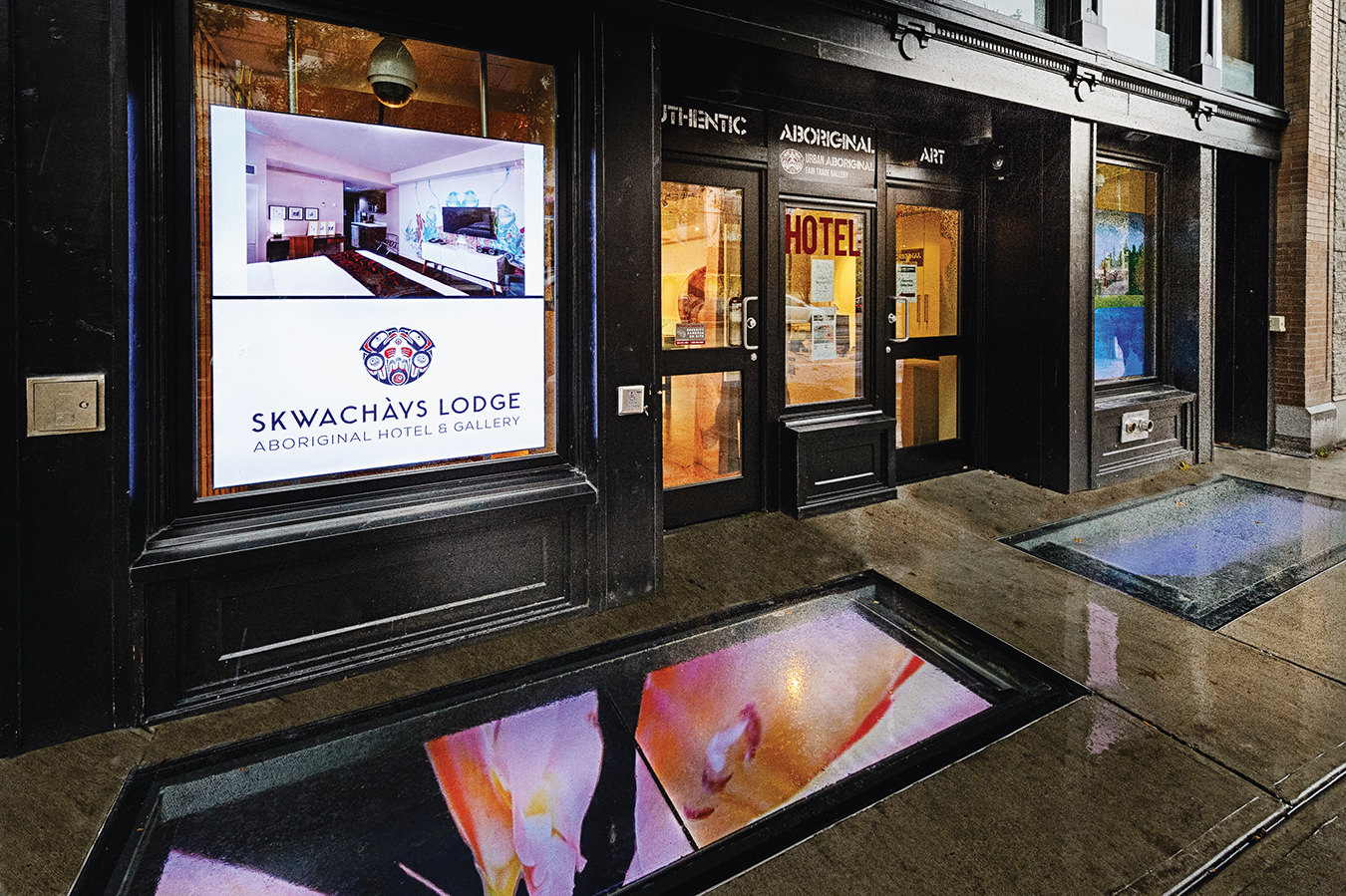In the heart of downtown, tucked away two blocks from Rogers Arena and down the street from the Chinatown archway, is the paradoxical brick façade and 40.5 metre totem pole (the Dreamweaver) rising from a fifth-floor balcony of the Skwachàys Lodge. Many stay here because of its convenient location to all things Vancouver, but step past the discreet black and white “Hotel” sign, and you’ll find more than just a place to crash after cheering on the Canucks.
Before becoming the social enterprise of hotel, art gallery, and artists’ residences it is today, the building was simply the old Pender Hotel. Dave Eddy, CEO of the Vancouver Native Housing Society, demolished the wood-framed building, retaining only the heritage brick façade, and constructed a new seven-storey concrete building. In 2012, he opened the Skwachàys Lodge as a healing lodge accommodation for Aboriginal people coming to Vancouver for patient travel, with the Urban Aboriginal Fair Trade Gallery on the ground floor. That same year, after finding that the revenue was not quite covering the necessary costs for the middle floors’ 24 artists in residences apartments’ reduced shelter rates, the hotel opened up to the general public. Enter Jon Zwickel, a semi-retired hotel developer, who came to the gallery in search of Aboriginal art and left inspired with the idea of how to help the lodge: evolve the hotel portion into Canada’s first boutique Aboriginal art hotel.
Offering his work pro bono, Zwickel brought in six renowned hotel design firms, while Eddy got in touch with six Aboriginal artists. Designer and artist paired up to create the 18 intricately designed, art-focused suites, along with the help of donated furniture and volunteer work by locals. Each room is built from a unique theme and story, available to read in each room’s guest directory, and conveyed through the artwork and decor by Aboriginal artists. Rooms such as Clifton Fred’s Canadiana Suite and Sabina Hill and Mark Preston’s captivating Moon Suite all vary in style, but every room is filled with natural light and crisp beauty, making creative use of their space with all of the in-room amenities needed for a comfortable weekend getaway.
The suites share the top floors with a board room, as well as the Smudge Room and Sweat Lodge—two places for purifying ceremonies led by Aboriginal elders. In addition to the ceremonies, Skwachàys Lodge is working with the Aboriginal Tourism Association of B.C. to offer other Aboriginal excursions, for instance, to the Stanley Park totem poles and Haida Gwaii’s Haida House, making the lodge the ideal location for the socially conscious traveller to touch base before exploring the long-running local history.
The Skwachàys Lodge offers such unique opportunities that the ever-burning question must be asked: can the lodge be recreated elsewhere? Eddy has no doubt in its portable model: “It could work in any Canadian city with a significant urban Aboriginal population.” Those at the Skwachàys Lodge are conscious of the fact that supportive housing funds are starting to contract, while their necessity is never lessened. At this point, the lodge is unique in what it has accomplished to strengthen the connection between art, supportive housing, hotels, and culture, but with any luck, it won’t be alone for long.
Photos courtesy of Skwachàys Lodge.













